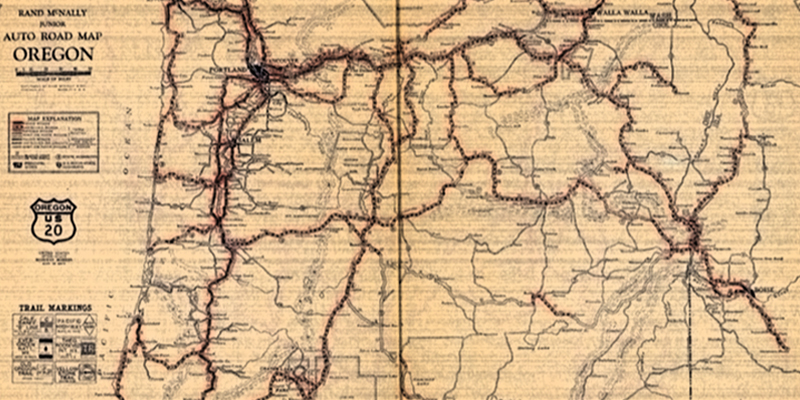Daughter sees the remnants of the barn first. My eyes have been glued to the winding two-lane highway for the past twenty miles, since the moment when I took our rental car a hair too fast around a blind turn and startled a family of whitetail deer making their light-footed way across the road. The buck juked left and right and finally sprang out of the way, leaving Daughter enchanted and me muttering fervent curses of relief.
But the barn delights us both.
“What happened to it?” Daughter says as we pull to a stop.
Time. Being nine years old and a city kid, Daughter hasn’t seen many derelict buildings. No property in Los Angeles stays untouched for long. Here in Central Oregon, skeletons of former dwellings are easy to find, even if each carcass is separated by a long drive from the last. Barns and corrals, mostly. When you need a new stable and you have a thousand acres of pasture to build upon, what’s the point of tearing down the old one? Let it sit.
This one has been sitting for fifty or sixty years, I guess. One large section of its roof has caved in as thoroughly as if a meteor had plummeted through the rafters and knocked the entire shelter to tilt sideways. I let Daughter play around the barn, so long as she doesn’t go inside and takes care not to touch the rusted nails and hinges that protrude from the rotted wood like tetanus-coated porcupine quills.
That’s why we’re here, after all. To take a close look at a part of the country I hadn’t seen since I was young, but which stuck so firmly in my mind that when I decided to set my next thriller in a small town, I knew that town would have to be somewhere in the high arid plains at the center of Oregon. A struggling rural community surrounded by magnificent landscapes and the scattered fragments of homesteads and other towns that lost their own fights to survive long ago.
Back in the car, Daughter and I continue west, following the map. A paper map. The cell phone GPS isn’t an option this far out. Our trip is one part location scouting to flesh out the first draft of the novel that would become Mercy River, and an equal part quality time. Daughter didn’t see much of me during the weeks spent finishing the last book. Traveling together gives us a chance to catch up on the critical intrigues of fourth grade and compare whose playlist is better for singing along. Pat Benatar versus Meghan Trainor.
The world moves on. But shards of these broken places remain, in spirit as much as structure.We’re in search of Antelope, one of Oregon’s most famous ghost towns. The term isn’t quite accurate. At least two dozen people still live within a gallop of what could charitably be called the town’s center. The basement of the once-grand and still impressive school building is used for communal functions and town business. But empty, boarded-up structures easily outnumber the populace. One week after our visit, Antelope will have a new moment in the spotlight, as the documentary Wild Wild Country detailing the town’s takeover by the Rajneesh cult in the early 1980s is released to critical acclaim.
Today, however, Antelope looks as lonesome as it ever was. A wet snow has begun to fall, another joy for the California kid. She and I bundle up and walk around the properties. We’re probably trespassing, which makes Daughter a little nervous and lends a spark to our adventure. The occasional broken plank allows us to peek into old garages and ramshackle shops, seeing little but rat-specked countertops and whatever piping couldn’t be salvaged. Born as a stagecoach stopover, Antelope thrived through the late nineteenth century until a new railroad drew its citizens to resettle a dozen miles away. That town withered in turn a few decades later when highways replaced the rails.
The world moves on. But shards of these broken places remain, in spirit as much as structure. Maybe that’s why mystery writers—and readers—are so drawn to dead or dying towns like Antelope and its brief successor Shaniko. Towns out of money, out of sight, out of luck, holding on as if to remind us of our own impermanence. Momento mori. A perfect setting to attract characters equally lost, desperate types in danger of becoming just another ghost among those already assembled and waiting.
Abandoned spaces, and still oddly of value—would Daughter and I have come this far to see a town that was prosperous? I find what I came for. While the fictional town of Mercy River will still have its few hundred citizens, I decide the book also needs a ghost town like this one. A forsaken place, which might play host to a day of raucous carousing by interlopers, but which would inevitably be left lonelier than before. I’ll call it Pronghorn, as a nod to Antelope.
“It’s cold,” Daughter manages through chattering teeth. She’s not wrong. We beat a retreat to the rental car and remove our soaked hats and wait while the defroster labors to clear fog from the windshield.
“What did you think of the town?” I say.
“Cool. Spooky.” She wiggles creepy-fingers in the air.
“That’s what I like about it too.”
I check the map and point out a deserted ranch an hour’s drive to the northeast. Daughter votes in favor of pizza. Food wins out. Civilization isn’t the only thing that’s fleeting. We may not have too many more trips like this before the world turns and Daughter moves on to build her own life.
“You pick the song,” I say, starting the car as she waves out the window at the phantoms. They wave back, happy to have had company.

















